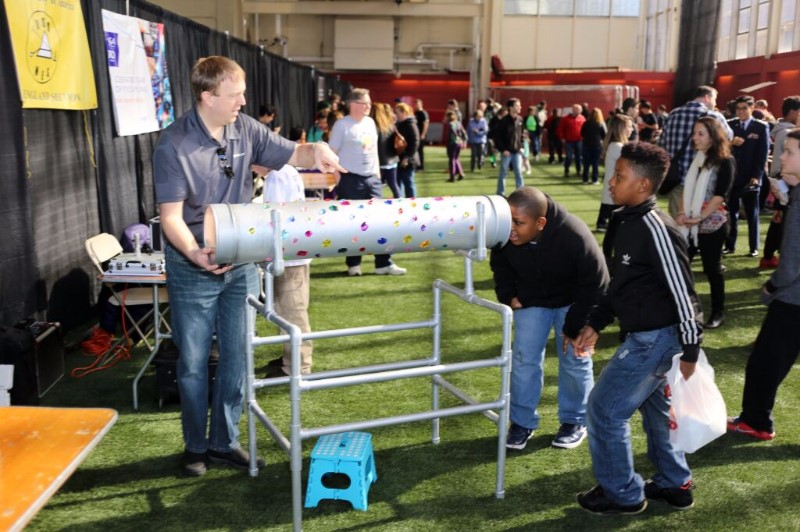Keeping a Tradition
Keeping a Tradition
New England Section of OSA
Each year the NES/OSA participates in several outreach events to demonstrate the role optics plays in everyday life. Sharing knowledge of optics applications has been an ongoing effort since the mid-1970s evolving over time. Our current approach is to join public STEM EXPOs and Science Fairs. Massachusetts has a statewide system of science fairs split into six regions. Each region hosts middle and high school fairs with winners eligible to compete in the annual statewide fairs. The local section provides funding to each fair to cover overhead and prizes, and attended 3 fairs with optics demonstrations.
For 2016, the local section allocated $3400 for science fair support splitting the money between the regional fairs ($900), the two statewide fairs ($2000) and an allocation of funds for new and improved demonstrations including giveaways to attendees. The OSA was asked for and provided $1700 through an OSA Centennial Special Events Grant.
This year NES/OSA was invited to the Boston Regional, High School and Middle School fair Expos. Each Expo is comprised of fair sponsors and STEM prompting organizations. Each attending organization is provided space to share information about the organization and / or demonstrate something about the science and engineering performed by the sponsor. The Expo was created specifically for the NES/OSA several years ago to improve our access to the students and other fair attendees, and is now a staple of the fair experience all attendees.
The centerpiece of our Expo participation is our collection of Optics Suitcases. These began life as a set of in-class lecture tools that have evolved into various hands-on demonstrations illustrating the science and engineering of optics. Demonstrations include applications in displays, lighting, color, thermal sensing and medical diagnosis. They include optics principles like refraction, transmission, diffracts and polarization. Each demonstration allows the student to play with the optics to discover how things work and our outreach team will have several examples of how optics is used in our everyday lives.
For our members, it’s the “Aha moments” that keep us coming back.
• During a demonstration of total internal reflection in a right angle prism, you can see the light reflect twice and return in along the same path as the incident light. “I bet you have seen this in action when you are in a car at night and see the road markers showing the edge of the road”. “So it’s the light from the car headlights?”
• During a demonstration of color mixing you can illustrate how Red, Green and Blue can combine into any color of the rainbow. “So that is how my smart phone display shows me my pictures!”
• My favorite was a student returns our table with parents, friends or siblings in tow and reenacts the demonstration they had seen during their first visit.
Our first Expo was with the Boston region science fair on March 5th. We joined a dozen other groups all promoting STEM. Virginia Nhi and Agastra Nguyen from the John D. & O'Bryant School of Mathematics and Science received the Optical Society Award for their project. We had three members attending for a morning and afternoon of demonstrations to the 300 or so students competing along with their family members.

On May 7th, we attended the statewide High School fair. This fair draws nearly 400 student competitors to the campus of MIT with public viewing of the student projects and Expo in the afternoon. Three NES/OSA members attended for demonstrations.
The final event was the Middle School statewide fair held on June 4th. Over 300 students participate in this fair at the Worchester Technical High School. The NES/OSA funding sponsors 12 second place awards. Timing of this Expo allowed only a single NES/OSA member to attend for an active session with students and their parents. The move to hands-on demonstrations was key to permit one person to work with multiple groups simultaneously.

This year the NES/OSA was able to promote optics through participation with the Massachusetts network of science fairs. The local section had direct interaction with 1000 or so student competitors at three fairs and supported activities of 1500 or so additional fair attendees. Each fair designated one or more Optical Society prizes from NES/OSA contributions, with several notes of thanks coming from winning students. NES/OSA strives to share our members’ love of optics to a broad community each year with science fairs providing one of our main audiences to achieve our overall outreach goals.
